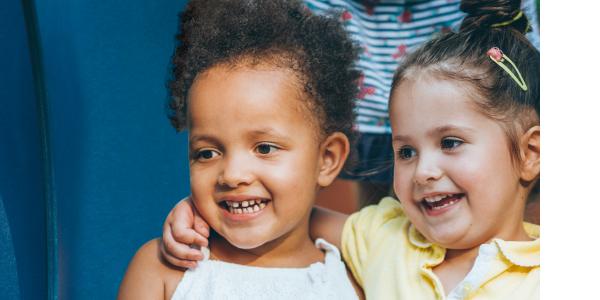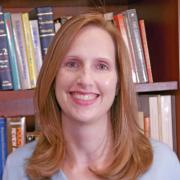Embracing Anti-Bias Education

You are here
For me, embracing anti-bias education is about bringing out the best in all of us—ourselves, our colleagues, and the children and families we serve. It gives us a framework for identifying and living our values. It invites us to honor all children’s humanity and to think deeply about what maximizing each child’s potential requires. It shows us a pathway that begins with adults engaging in self-reflection and ends with children having the skills, knowledge, and strengths they need to stand up for themselves and others. Most important, it enables us to forgive our failures and try again each day.
This Young Children cluster opens with an overview of anti-bias education drawn from the second edition of NAEYC’s bestselling book Anti-Bias Education For Young Children and Ourselves, by Louise Derman-Sparks and Julie Olsen Edwards. “Understanding Anti-Bias Education: Bringing the Four Core Goals to Every Facet of Your Curriculum” offers guidelines for teacher-planned and child-initiated activities that will help children develop positive identities, take joy in diversity, understand bias, and act according to their beliefs. (Stay tuned: this new edition will be available early in 2020.)
Preparing to engage in anti-bias education starts with self-reflection. We must question our own thoughts and feelings—searching for stereotypes and prejudices—before (and while) we help children develop their own anti-bias understandings. In a memoir-style article, Ellen Ellsberg Edge, a former teacher and center director, courageously shares her self-reflections. In “What ’s Love Got to Do with It? Relationships and Reflection in Early Childhood Programs,” Edge reveals assumptions she made about children and the resulting interactions that, in retrospect, she regrets. Having learned a great deal in her more than 20 years working with children, she also provides practical strategies for connecting with each and every child.
Moving to a classroom-level view of anti-bias education, kindergarten teacher Doriet Berkowitz provides a detailed look at how she reexamined her usual unit on identity. “How Do I See Myself? How Do Others See Me? Exploring Identity in Kindergarten” shows a classroom community in flux as some children adhere to traditional binary concepts of gender while others take a more expansive approach in their gender expressions and identities. As children explore gender and other aspects of identity from multiple angles, they think deeply about who they are, how they wish to be perceived, and how to make apparent their respect for the ways others want to be known.
In “Eliot-Pearson Children’s School: Building an Inclusive Community and Pursuing Social Justice,” Hanna Gebretensae and John Hornstein describe a school-wide commitment to anti-bias education. This collective initiative begins with affirming the home–school connection with 3-year-olds and builds concepts of identity and empowerment, culminating in all first-graders participating in governance through their Class Council. Summing up their commitment to anti-bias education, the authors write, “As much as it is our job to prepare children for school and to assure their emotional well-being, it is equally important for the profession to acknowledge our collective responsibility to foster kindness, compassion, and fairness.”
Rounding out this Young Children cluster, the last two articles consider two rarely discussed facets of anti-bias education: spirituality and learning standards.
In “Finding a Place for the Religious and Spiritual Lives of Young Children and Their Families: An Anti-Bias Approach,” John Nimmo, Mona M. Abo-Zena, and Debbie LeeKeenan acknowledge that spirituality often feels like a forbidden topic in the classroom—it’s too fundamental to individual family values and too sensitive for teachers to address. Still, children have questions about spirituality and religion, and teachers may not be able to meaningfully engage in anti-bias education if they feel they must ignore an essential part of a child’s identity. To help teachers navigate these concerns, the authors offer methods for helping children develop religious literacy as part of their anti-bias education.
According to Louise Derman-Sparks and Julie Olsen Edwards, a “basic premise in anti-bias education is ‘We are all the same. We are all different. Isn’t that wonderful!’” Yet as Jeanne L. Reid, Catherine Scott-Little, and Sharon Lynn Kagan point out, learning standards tend to not recognize children’s differences. In “Diverse Children, Uniform Standards: Using Early Learning and Development Standards in Multicultural Classrooms,” the authors summarize recent research showing culture-based variations among children in several developmental domains (such as different ways of paying attention and different ways of seeking help). They also assist teachers in using their deeper understanding of the impact of culture to recognize—and avoid reinforcing—cultural biases embedded in learning standards. With care and intentionality, teachers can meet the standards’ goals while celebrating children’s diversity.
Whether you are considering anti-bias education for the first time or you are gathering fresh ideas to continue your journey, I hope you hold tight to the joy in this work. On the most challenging days, begin your self-reflection with Derman-Sparks’ and Edwards’ wise words: “Anti-bias work is essentially optimistic work about the future for our children.”
—Lisa Hansel

We’d love to hear from you!
Send your thoughts on this issue, and on topics you’d like to read about in future issues of Young Children, to [email protected].
Would you like to see your children’s artwork featured in these pages? For guidance on submitting print-quality photos (as well as details on permissions and licensing), see NAEYC.org/resources/pubs/authors-photographers/photos.

Lisa Hansel, EdD, is the editor in chief of NAEYC's peer-reviewed journal, Young Children.
